Intersection’s Nonprofit Spotlight series profiles South L.A. organizations that are propelling positive change in South L.A. Here we look at Esperanza Community Housing Corporation — a 25-year-old group helping people to create communities for themselves where they can thrive.
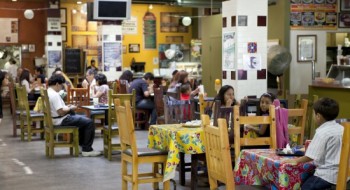
Mercado la Paloma | www.mercadolapaloma.com
What is Esperanza Community Housing’s purpose?
Esperanza seeks to create opportunities for community residents’ growth, security, participation, recognition, and ownership through developing and preserving affordable housing, promoting accessible health care, stimulating involvement in arts and culture, ensuring quality education, pursuing economic development, and advocating for progressive public policy.
When was Esperanza Community Housing founded? 1990
Which areas does Esperanza Community Housing serve? Figueroa Corridor
What services does Esperanza Community Housing provide? The organization provides a variety of programs around the core program areas of affordable, housing, health, economic development, environmental justice, and arts and culture. [Read more…]









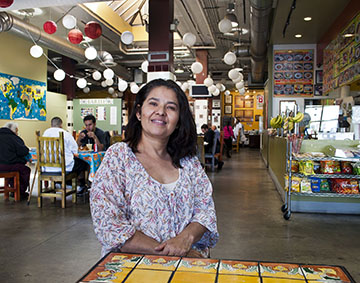
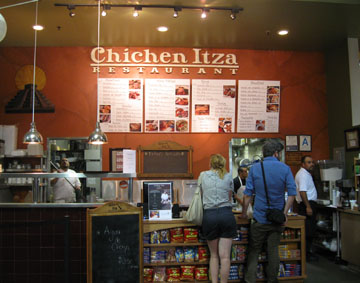 The Mercado La Paloma is a charming and vibrant space filled with restaurants and non-profit organizations. Chichen Itza is a Yucatan restaurant at the center of the Mercado, not only for where it is situated in the market, but for its eleven successful years in business. Chef Gilberto Cetina and his son, Gilberto Cetina Jr., have been at the Mercado since day one. Their story warms the heart, and their food satisfies the belly.
The Mercado La Paloma is a charming and vibrant space filled with restaurants and non-profit organizations. Chichen Itza is a Yucatan restaurant at the center of the Mercado, not only for where it is situated in the market, but for its eleven successful years in business. Chef Gilberto Cetina and his son, Gilberto Cetina Jr., have been at the Mercado since day one. Their story warms the heart, and their food satisfies the belly.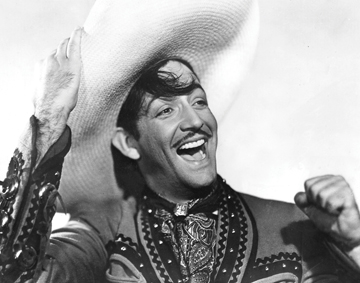 “¡Ay Jalisco, No Te Rajes!” (Jalisco, Don’t Back Down) – 1941. (Photo courtesy Concepción Bauza.)
“¡Ay Jalisco, No Te Rajes!” (Jalisco, Don’t Back Down) – 1941. (Photo courtesy Concepción Bauza.)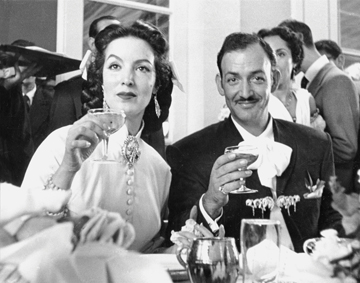 Wedding of María Felix and Jorge Negrete – 1952.
Wedding of María Felix and Jorge Negrete – 1952.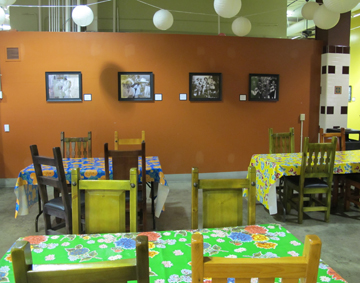 Exhibit photos at the Mercado.
Exhibit photos at the Mercado.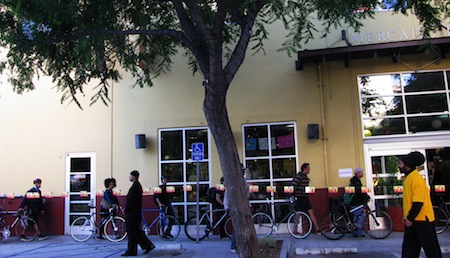 In the shady gated courtyard in front of Mercado La Paloma on Grand Avenue, handfuls of low-rider and fixed-gear bicycles plus a booming DJ sound system set the stage for the
In the shady gated courtyard in front of Mercado La Paloma on Grand Avenue, handfuls of low-rider and fixed-gear bicycles plus a booming DJ sound system set the stage for the  Half of the $10 admission fee will help campaigns for safer streets in South L.A. that urge for more bike lanes and green areas, better street crossings and narrower roads. The other half will benefit
Half of the $10 admission fee will help campaigns for safer streets in South L.A. that urge for more bike lanes and green areas, better street crossings and narrower roads. The other half will benefit  Organizers are tentatively planning for the new route, for the next ride on April 15, 2012, to shoot south on Central Avenue from Downtown Los Angeles and head west on Martin Luther King Jr. Boulevard to Exposition Park and Leimert Park. In the future, they hope to extend it all the way to Watts Towers. But closing down so many streets to car traffic requires money for the proper permits.
Organizers are tentatively planning for the new route, for the next ride on April 15, 2012, to shoot south on Central Avenue from Downtown Los Angeles and head west on Martin Luther King Jr. Boulevard to Exposition Park and Leimert Park. In the future, they hope to extend it all the way to Watts Towers. But closing down so many streets to car traffic requires money for the proper permits.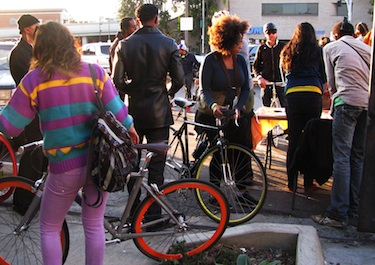 “South L.A. gets a really bad rep from media sometimes,” said Andres Ramirez, a
“South L.A. gets a really bad rep from media sometimes,” said Andres Ramirez, a 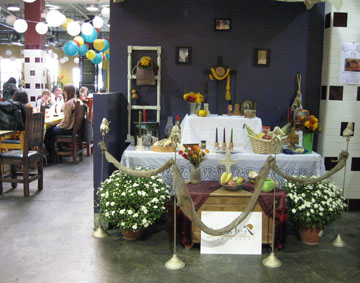 Dia de los Muertos fills Los Angeles with altars, sugar skulls and yellow marigolds on the first two days of November each year. But recently, the Mexican holiday has become increasingly popular.
Dia de los Muertos fills Los Angeles with altars, sugar skulls and yellow marigolds on the first two days of November each year. But recently, the Mexican holiday has become increasingly popular.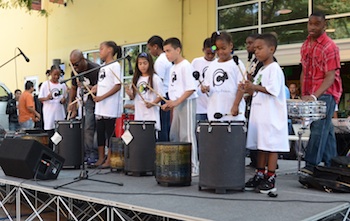
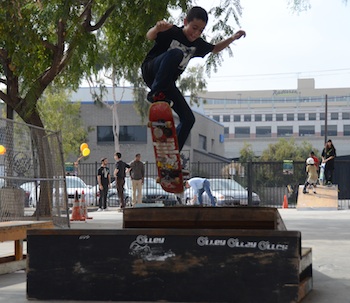
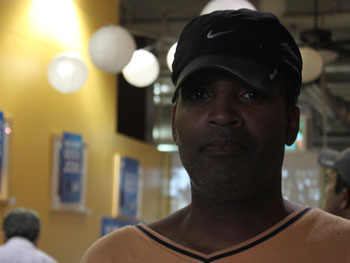
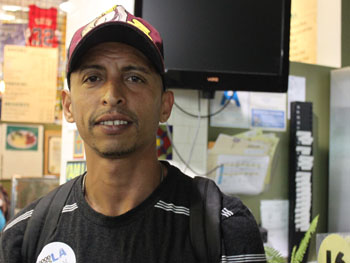
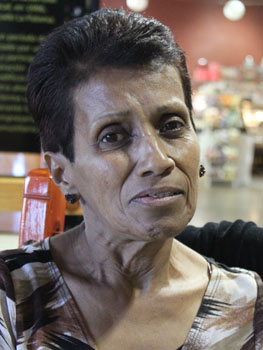
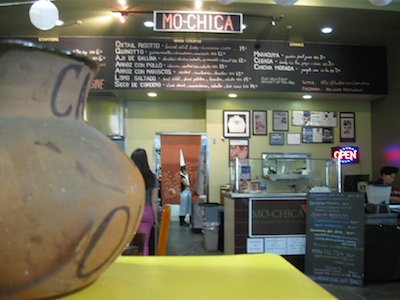 Today Zarate’s Mo-Chica, located in Mercado La Paloma at W. 37th St. and Grand Ave, pulls in customers from all over Los Angeles. Named one of 2011’s best new chefs by Food & Wine, Zarate has a new restaurant, Picca, in Beverly Hills and is planning to open up another Mo-Chica in downtown L.A.
Today Zarate’s Mo-Chica, located in Mercado La Paloma at W. 37th St. and Grand Ave, pulls in customers from all over Los Angeles. Named one of 2011’s best new chefs by Food & Wine, Zarate has a new restaurant, Picca, in Beverly Hills and is planning to open up another Mo-Chica in downtown L.A. 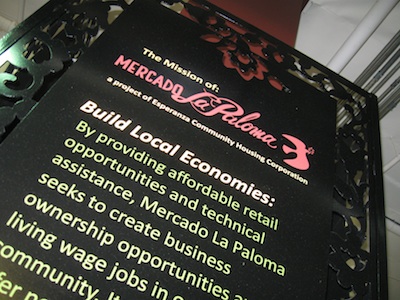 Turner describes Mercado La Paloma as a small business incubator. With support from the city and foundations, Esperanza Community Housing Corporation transformed an old garment factory into a market space that includes restaurants, service businesses, arts and crafts shops, and non-profit organizations.
Turner describes Mercado La Paloma as a small business incubator. With support from the city and foundations, Esperanza Community Housing Corporation transformed an old garment factory into a market space that includes restaurants, service businesses, arts and crafts shops, and non-profit organizations. 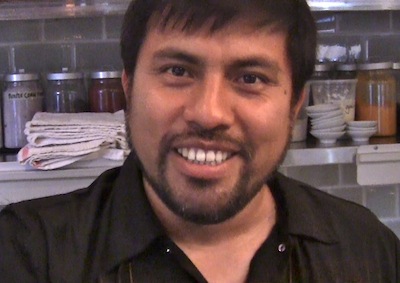
 Surrounded by a field, storage facilities, warehouses, and the DMV, the Mercado is easy to miss. Even though it’s very close to the University of Southern California, the 110 freeway separates it from campus, hiding it from view. Students end up going to fast-food places like Subway, not knowing they could support a local business and get a good meal, says Zarate.
Surrounded by a field, storage facilities, warehouses, and the DMV, the Mercado is easy to miss. Even though it’s very close to the University of Southern California, the 110 freeway separates it from campus, hiding it from view. Students end up going to fast-food places like Subway, not knowing they could support a local business and get a good meal, says Zarate. 




